The DJI Ban: Your Guide to What’s Happening with the Ban—And What To Do If It Passes
BY Zacc Dukowitz
19 June 2024Heard about a law that would ban all DJI drones in the U.S.?
It’s real, but it’s not yet law.
The draft bill is called the Countering CCP Drones Act and it calls for a blanket ban on all DJI drones in the U.S. for everyone. That’s right—everyone.
This guide to the DJI Ban covers everything you need to know. We’re updating it regularly with new developments to help you stay on top of what’s going on with the ban.
Where Do Things Stand Right Now with the DJI Ban?
After some back and forth it looks like the law calling for the ban is currently back on track.
But it’s not law yet. And there is still a lot of time and several steps before it becomes law.
Here’s the latest news on the Countering CCP Drones Act, commonly called the DJI Ban:
- In June, The House of Representatives included the Countering CCP Drones Act in its version of the 2025 NDAA (National Defense Authorization Act).
- In mid-July, the Senate shared its version of the 2025 NDAA—and it did not include the Countering CCP Drones Act.
- Most recently—In late July, Senator Senator Rick Scott (R-FL) submitted an amendment to the 2025 NDAA that called for adding the Countering CCP Drones Act to the bill.
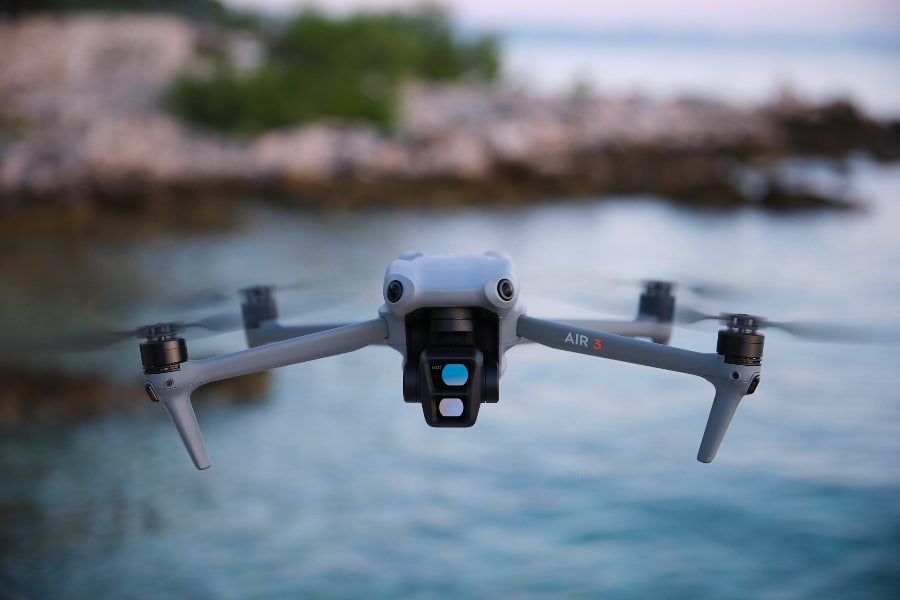
Credit: DJI
This guide walks you through everything you need to know about the DJI ban, including what the ban would entail, what you can do to try and prevent the ban from being passed, and the history of how we arrived at this moment.
- Details of the Proposed DJI Ban
- What Can You Do?
- Should I Buy a DJI Drone Right Now?
- Alternatives to DJI
- Why Are They Trying to Ban DJI Drones?
Details of the Proposed DJI Ban
The bill that passed the House on June 14, 2024 is H.R. 2864, the “Countering CCP Drones Act.”
Here are the key details of the DJI ban proposed in the Countering CCP Drones Act:
- The ban works through the FCC. If passed, DJI will be added to the FCC’s blacklist, and the FCC will no longer issue licenses for new DJI drones.
- Current DJI products may also be banned, though that seems unlikely.
This means that:
- If you own a DJI drone you may be able to keep using it.
- If you buy a DJI drone you may also be able to keep using it.*
We don’t have a crystal ball, and we can’t currently know whether current DJI drones will also be rendered inoperable by the ban.
*But there is risk here. Although the law calls only for blocking future DJI models from getting FCC licenses, there is no guarantee a ban on existing models couldn’t happen. It just seems unlikely.
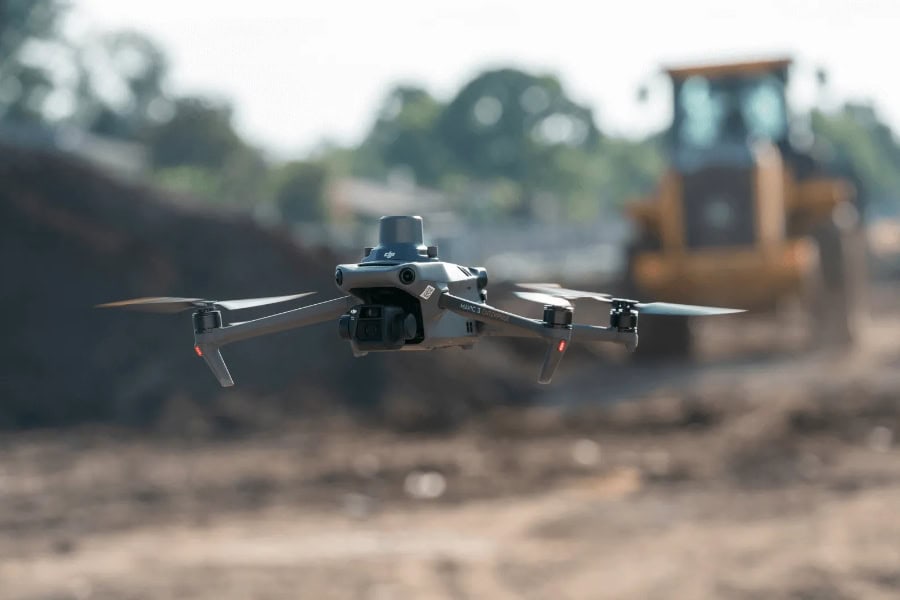
Credit: DJI
The Countering CCP Drones Act has been included in the 2025 National Defense Authorization Act (NDAA), a large funding bill that gets passed every year to allocate the defense budget and establish defense policies.
Last year, a ban on Chinese drones from use by federal agencies became law by being included in the 2024 NDAA. The ban was a key part of the American Security Drone Act (ASDA), which was first proposed in 2019—so there’s a precedent in adding this kind of drone ban to the NDAA in order to get it passed.
The Countering CCP Drones Act calls for adding DJI to the FCC’s (Federal Communications Commission’s) blacklist. Doing this would block DJI from accessing U.S. communication infrastructure, making it impossible to operate DJI drones in the U.S. But only new DJI drones would be blocked—existing models that have been approved by the FCC would still be operable.
Read the full Countering Drones CCP Drones Act text.
What Do the Politics Look Like?
The Countering CCP Drones Act passed the House with a vote of 217 to 199. The bill was largely a Republic initiative, with only six House Democrats voting for it.
Given that Democrats hold a narrow majority in the Senate—they have 51 votes out of 100—if the bill is voted strictly on party lines there it may not pass.
Regarding the inclusion of the Act in the NDAA as a kind of backdoor for getting it passed, a coalition of democrats issued a statement that said:
House Republicans have once again put their own extremist agenda over strengthening US national security. Through their hyper-partisan amendment process, they transformed a commonsense, bipartisan package into one laden with extremist policy riders and poison pills.
– New Democrat Coalition
A Quick Note on the Drones for First Responders Act
There is a second bill currently being considered in Congress called the Drones for First Responders Act.
This bill has been put forward by U.S. Representative Elise Stefanik, of New York. Stefanik is also behind the Countering CCP Drones Act.
Here’s what the DFR Act calls for at a high level:
- Tariffs on Chinese drones, which will increase every year for six years.
- In the sixth year, a full ban of Chinese drones will be instituted.
- Money from the tariffs will go to grant programs for first responders, critical infrastructure operators, and farmers.
The DFR Act has not made nearly as much progress toward becoming law as the Countering CCPC Drones Act.
What Can You Do?
If you’re concerned about the Countering CCP Drones Act and you want to speak out, here’s how you can do that:
- Use this tool to identify the Senator(s) and House Representative you should contact for where you live.
- The same tool has contact information for each person you should contact to express your opposition to the Countering CCP Drones Act. Send a message or make a phone call to each person listed there.
- Need help composing your message? Go to this page on the Drone Advocacy Alliance (DAA)* website and select the second option on the page: “(Updated) Oppose the Countering CCP Drones Act Campaign.” That will take you to a page with guidance on composing a message to your senator(s) and representative.
Want to to express your concerns about the Drones for First Responders Act?
Use the two steps above to identify the people to contact.
Then, get guidance for composing your message by going to this page on the DAA website and selecting the third option on the page: “Tell Congress: Oppose the DFR Act.”
*Note: The DAA is funded by DJI. Here’s what it says about its relationship with DJI:
The Drone Advocacy Alliance is sponsored by and its website maintained by DJI Technology, Inc. in partnership with the drone community. However, the Alliance does not endorse one drone manufacturer over another, and its partners represent a wide variety of industry stakeholders.
– The DAA
Should I Buy a DJI Drone Right Now?
At the moment, there is no language in the Countering CCP Drones Act that calls for banning DJI models already on the market or in people’s hands.
But we can’t predict the future. There could be a call for this kind of ban down the road.
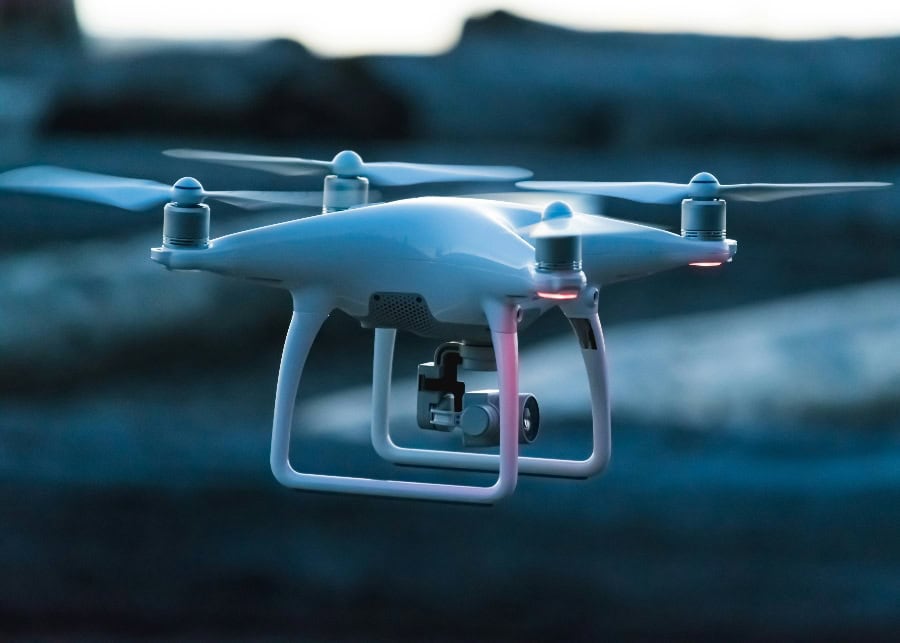
Credit: DJI
But if you already own a DJI drone—or if you buy a new one—it seems likely your drone will continue to work just fine, even if the law passes.
We say “seems likely” because the current wording in the law is pretty vague.
The law would add DJI to the Defense Department’s Section 1260H List of “Chinese Military Companies” (there’s already 50 companies on the list). Once DJI is on that list, the FCC will have the authority to roll out a ban with a waiting period, to implement an immediate ban, or even to ban all DJI drones.
Based on the conversations we’ve had and reporting we’ve seen, the last option seems unlikely. A complete ban would risk making first responders, not to mention thousands of other voters, furious by suddenly rendering their investments worthless. And keep in mind, these are investments paid for with tax dollars.
We’ve already seen how much of a disaster a complete DJI ban was in Florida for state agencies. Though it could happen, we don’t anticipate the same blunder to be made at the federal level.
So it might actually be the perfect moment to take action on buying a DJI drone. Just keep in mind that these are uncertain times, and we don’t know what’s going to happen in the coming months.
Also—The Ban May Not Pass
The truth is, we have no idea what will happen with the law—it may change or lose political momentum between now and whenever the Senate vote happens.
On that note, it’s worth pointing out that the law passed on a slim majority in the House, with Republicans voting in favor and Democrats largely against. In the Senate, Democrats hold the majority, and may use that majority to vote down the law.
Read more about whether to buy a DJI drone right now.
Alternatives to DJI
In light of the possible ban, we’ve had several people reaching out asking about alternatives to DJI.
We’ll be honest—at the moment, there aren’t a lot of great alternatives at the same price point.
That being said, here is some guidance when looking for alternatives.
For Commercial Drones
If you’re looking for commercial drones in the $8k-$20k+ range for professional operations we recommend checking out the DOD’s Blue UAS list.
Some standouts from the list include:
- Skydio’s X2 and X10D
- Parrot’s ANAFI USA
- AgEagle’s eBee TAC
- Freefly Systems’ Alta X
- Teal Drones’ Teal 2
Learn more about the Blue UAS list.

The Skydio X10
For Consumer Drones
If you’re not as concerned about supply chain issues (i.e., finding a drone that isn’t made in China/contain parts made in China) and you just want consumer drone alternatives that aren’t facing a potential ban, here are some companies to consider:
- Autel (based in China)
- BRINC (primarily for public safety)
- FLIR
- Parrot
- AgEagle (higher end)
- Freefly Systems (higher end)
- Anzu Robotics (higher end, new company so relatively untested)
We’ll be blunt: These drones are expensive.
DJI is one of the only companies we’re aware of that makes prosumer drones in the $500-$5,000 range that are of a high enough quality to actually build a business on. (The Skydio 2 used to fit this description, but Skydio isn’t selling drones to consumers any more.)

The Autel Evo 2 Pro
Autel is also a good option. But it’s based in China, so it could soon be on the chopping block, too.
So, for the moment, if you own a drone services company, DJI is still probably your best bet when it comes to mid-range options.
See our list of American drone companies.
A Note on Green UAS
Looking at this list, you may notice that there’s a gap in the market.
On the one hand, we have Blue UAS, which are drones thoroughly vetted by the DOD for use by the federal government.
But we don’t have a comparable list of drones that meet current NDAA requirements (i.e., they aren’t made in China or contain parts made in China), and that would be appealing for private companies.
This is where Green UAS comes into play. Green UAS is an initiative from AUVSI and the DOD to vet drones for commercial use, ensuring they’re NDAA compliant and meet rigorous security standards.
Green UAS is a complementary program to the Blue UAS initiative. But it’s not as rigorous or expensive as Blue UAS, which means it provides a way for commercial drone users to get drones that are secure without spending the extra money required for Blue UAS.
The only problem is that the Green UAS program is just getting started.
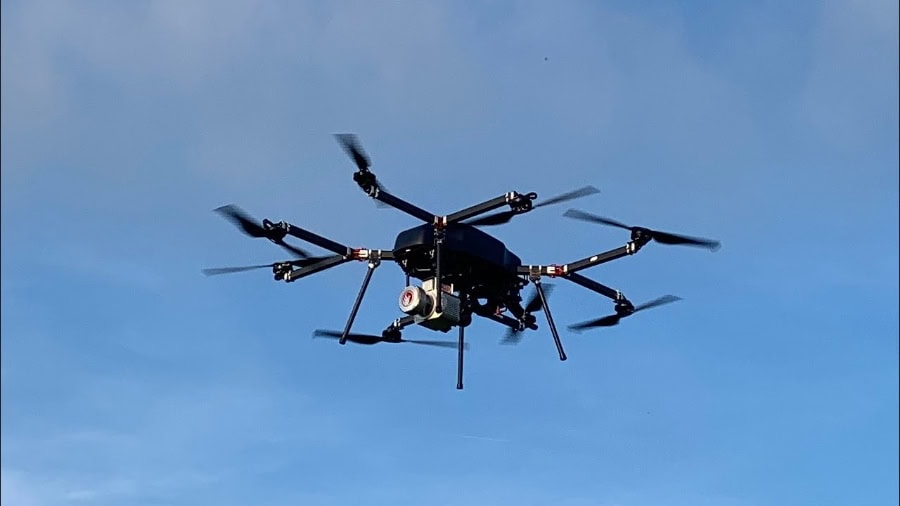
The Skyfront Perimeter 8
At the moment, only one company—Skyfront—is on the Green UAS Cleared list. But 15 more are in the process of joining that list, and we believe it will eventually be an important designation in the drone industry.
Why Are They Trying to Ban DJI Drones?
Big picture, Elise Stefanik and those backing the Countering CCP Drones Act claim that DJI drones are being used by China to spy on the U.S.
Communist China is using their monopolistic control over the drone market and telecommunications infrastructure to target Americans’ data and closely surveil our critical infrastructure.
– Rep. Elise Stefanik (R–N.Y.), Co-Author of the Countering CCP Drones Act
We should say that there’s no proof to back up what Stefanik says in this quote.
These kinds of claims started back in 2017. That year, the U.S. The Army issued a blanket ban on all DJI drones, citing “cyber vulnerabilities” in the company’s drones, which made it easy for them to be compromised by third parties.
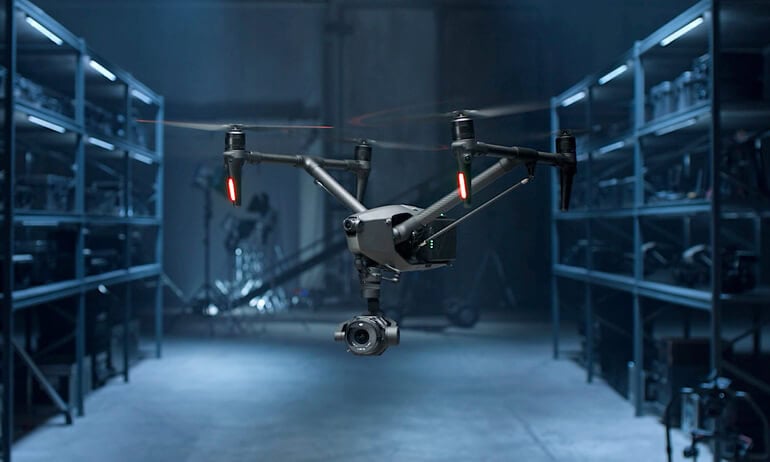
The DJI Inspire 3
The concern at the time was that DJI drones could be used to collect sensitive data, such as geolocation information, without telling users. And this data could be accessed by DJI, the People’s Republic of China, or third party hackers. (DJI has denied that it was collecting sensitive data.)
From there, claims have continued to accumulate without much, if any, evidence. And DJI has countered these claims with independent studies, audits, and articles.
Is DJI Actually Spying on the U.S.?
We’ve read recently that there are classified documents showing proof that DJI is spying. But we’ve never seen them, or any other smoking gun proving that DJI is actually collecting and sharing sensitive data.
Over the years, DJI has hired several independent third parties to vet its technology, all of which cleared DJI drones from spying concerns. Further, in 2021 a leaked Pentagon report found that the DJI Government Edition Matrice 600 and DJI Government Edition Mavic Pro were cleared for government use.
On the other hand, in 2022 we did learn that DJI receives funding from the Chinese government.
So is DJI actually spying?
Right now, the best we can say is that while there are legitimate concerns about DJI and privacy, there hasn’t been any concrete evidence presented to the public to verify those concerns.
A History of DJI Privacy Concerns in the U.S.
Here’s a brief history of DJI privacy concerns in the U.S.:
- August, 2017. The U.S. Army issues a ban on all DJI drones based on allegations that DJI’s drones were secretly configured to collect and send user data back to DJI.
- October, 2017. DJI responds by releasing Local Data Mode, which allows pilots to fly without any data being shared.
- November, 2017. An internal memo is leaked from the Department of Homeland security saying that DJI is using its drones to collect sensitive information in the U.S. and share it with the Chinese government.
- April, 2018. DJI hires San Francisco-based Kivu Consulting, Inc. to review its privacy practices. The resulting report absolves DJI of malicious or negligent data sharing practices, but privacy concerns linger.
- May, 2019. The Department of Homeland Security (DHS) issues an advisory in which it warns companies that their data may be at risk if they use drones made in China.
- June, 2019. DJI issues Government Edition, a line of drones made to ensure complete privacy of data, including photos, video, and locational data. At the same time, DJI announces that it will begin making drones within the U.S. and sends an open letter to the Senate Committee on Commerce, Science, and Transportation and the Senate Subcommittee on Security.
- January, 2020. The Interior Department extends the grounding of its drones indefinitely due to Chinese spying concerns. DJI publishes a statement calling the action “politically motivated” the day it’s announced.
- January, 2021. The American Security Drone Act (ASDA) is included in the U.S. Innovation and Competition Act.
- June, 2021. A leaked Pentagon report determines that the DJI Government Edition Matrice 600 and DJI Government Edition Mavic Pro have been cleared for government use.
- February, 2022. News breaks that DJI receives funding from the Chinese government.
- December, 2023. The ASDA becomes law as part of the 2024 NDAA, banning federal agencies from using Chinese drones.
- January, 2024. The FBI and CISA (Cybersecurity and Infrastructure Security Agency) issue a joint memo warning people of the threats posed by Chinese-made drones and providing drone cybersecurity recommendations
- June, 2024. The Countering CCP Drones Act passes the House and awaits a vote in the Senate.
- June, 2024. DJI announces that it will stop recording flight records for all drones used in the U.S.
→We’ll be updating this guide as news rolls out related to the DJI ban, so make sure to bookmark this page.


